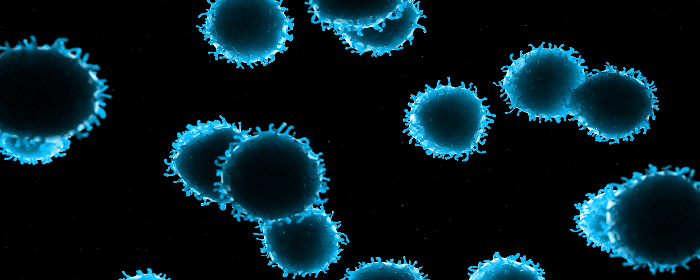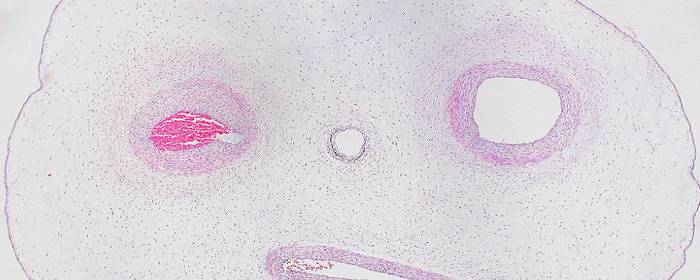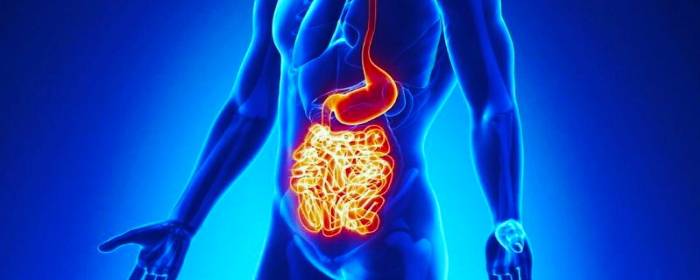
by admin | Feb 1, 2019 | Adipose, Exosomes, Mesenchymal Stem Cells, Stem Cell Research, Stem Cell Therapy, Studies, Umbilical Stem Cell
Most organs of the body recover from injury by generating new, healthy cells. Not every organ of the body has the same ability to form new cells, however. The skin is an example of an organ that has an amazing ability to regenerate. Liver and lung also have the ability to form new cells, but not as dramatically as skin. Kidney and heart have even less ability to repair and regenerate. On the opposite end of the spectrum from the skin is the brain, which has very little capacity to regenerate once it has been damaged or destroyed. All of these organ systems, especially those that are relatively unable to repair themselves, could theoretically benefit from stem cells.
Mesenchymal stem cells, also known as stromal cells, are multipotent stem cells derived from bone marrow, umbilical cord, placenta, or adipose (fat) tissue. These cells can become the cells that make up bone, cartilage, fat, heart, blood vessels, and even brain. Mesenchymal stem cells have shown a remarkable ability to help the body to produce new cells. Researchers are now realizing that the substances stem cells release may be more important than any new cells they may become. In other words, stem cells can directly become new healthy cells to a certain degree, but they can also release substances that dramatically increase the number of new, healthy cells.
Mesenchymal stromal stem cells release small packets called exosomes. These exosomes are filled with various substances that promote cell and tissue growth. Some of the most interesting and potentially useful substances are cytokines and micro RNA. Cytokines are the traffic cops of cellular repair, signaling certain events to take place while stopping others. Having the right cytokines in a particular area is critical for new tissue growth. The micro RNA released by stem cell exosomes is potentially even more exciting than cytokines. These tiny bits of RNA can directly affect how healthy and diseased cells behave. Micro RNA has a powerful ability to control the biological machinery inside of cells.
Exosomes exhibit a wide array of biological effects that promote the repair and growth of damaged and diseased organs. They promote the growth of skin cells and help wounds heal. Exosomes can reduce lung swelling and inflammation and even help the lung tissue heal itself (i.e. reduced pulmonary hypertension, decrease ventricular hypertrophy, and improve lung vascular remodeling). These small packets released by stem cells help prevent liver cells from dying (i.e. prevents apoptosis), promote liver cell regeneration, and slow down liver cirrhosis (i.e. fibrosis). Exosomes can also help protect the kidneys during acute injury and reduce the damage that occurs during a heart attack.
Several clinical trials are underway designed to allow these exciting developments to be used to treat patients. As the researchers state, “Extensive research and clinical trials are currently underway for the use of MSCs as regenerative agents in many diseases including spinal cord injury, multiple sclerosis, Alzheimer’s disease, liver cirrhosis and hepatitis, osteoarthritis, myocardial infarction, kidney disease, inflammatory bowel disease, diabetes mellitus, knee cartilage injuries, organ transplantation, and graft-versus-host disease.” We can reasonably expect that exosomes will be used to treat at least some of these conditions in the very near future.
Reference: Rani al. (2015). Mesenchymal Stem Cell-derived Extracellular Vesicles: Toward Cell-free Therapeutic Applications. Molecular Therapy. 2015 May; 23(5): 812–823.

by admin | Dec 3, 2018 | Osteoarthritis, Stem Cell Research, Studies
The human skeleton is made up of bone, cartilage, fat, nerves, blood vessels, and bone marrow. While the skeleton is usually strong and vibrant in youth, it changes considerably with age. Many people, especially women, experience demineralization of bone called osteoporosis. Most of us will suffer from painful, stiff, arthritic joints either from osteoarthritis or rheumatoid arthritis or both. While some of the diseases of bone and joints have specific treatments, none of them helps to restore bone and joints to their younger state. If one could reintroduce skeletal stem cells into the body, that could all change. Excitingly, researchers have recently isolated human skeletal stem cells from bone and other tissues.
At first glance, this breakthrough may not seem so surprising. One might wonder: didn’t we already have stem cells that form bone and cartilage? The answer is yes, but with an important caveat. Before researchers recently isolated human skeletal stem cells, the only stem cells that could be used to produce bone and cartilage were rather unpredictable. In addition to bone and cartilage, the mesenchymal stem cells that have been long used to form these tissues could also produce fat, muscle, fiberglass, blood vessel cells, and other tissues. In other words, the stem cells were broadly multipotent and, by extension, could not easily be used for a specific purpose, like mending bone or repairing an arthritic joint. That is why the recent discovery of these particular skeletal stem cells is so important.
The researchers isolated skeletal stem cells from various human tissues, mainly bone. They then used the skeletal stem cells to regrow bone and/or cartilage. Not only did the stem cells produce bone and cartilage in the first animal they tested, but they could retrieve stem cells from that animal and then cause bone to regrow in a second animal. This means that the skeletal stem cells have the capability of reproducing themselves.
The same researchers also discovered that when a skeleton is injured, such as in a bone fracture, the number of skeletal stem cells in that area increases dramatically. This makes sense since these cells are used to repair and regrow bone. It is also a promising result because it suggests that stem cells could be used to accelerate bone and joint healing in humans.
Scientists not directly involved in this research heralded this finding as “an extremely important advance.” However, they also acknowledge that more work needs to be done before skeletal stem cells can be routinely used in patients with orthopedic conditions. Nevertheless, these results are an exciting development in the field of stem cell research and orthopedics.
Reference: https://www.sciencenews.org/article/humans-have-skeletal-stem-cells-help-bones-and-cartilage-grow

by admin | Oct 4, 2018 | Stem Cell Therapy, Lupus, Wharton's Jelly
Wharton’s jelly is a rather unique body fluid. It is the connective tissue found within the umbilical cord. While Wharton’s jelly is connective tissue, it more closely resembles gelatin. Historically this material was discarded as medical waste; however, Wharton’s jelly has been shown to contain a number of therapeutic substances. Among these healing substances found within Wharton’s jelly is an abundant supply of mesenchymal stem cells.
One of the most intriguing features of Wharton’s jelly is that it contains a virtually limitless supply of mesenchymal stem cells. There are about 4 million new births in the United States each year, 5 million in the European Union, and over 100 million worldwide. The potential pool of cells is staggering when you consider only a small amount of Wharton’s jelly can contain millions of stem cells. Notably, Wharton’s jelly is usually discarded after the delivery of a healthy baby. If this material could be donated instead of discarded, researchers believe they have found an abundant, renewable resource from which to draw mesenchymal stem cells.
However, the abundance of Wharton’s jelly is not the most impressive feature of the substance. The stem cells found in Wharton’s jelly are rather unique. Perhaps most importantly, the cells are immuno-privileged. This means they are not readily recognized by the immune system. Consequently, the stem cells can be taken from the umbilical cord, purified, and then injected into a patient with little risk of the patient having an immune reaction to the cells. These particular mesenchymal stem cells are also interesting because they are relatively “primitive,” which means they have some of the same properties of embryonic stem cells. However, Wharton’s jelly can be obtained without controversy, while harvesting embryonic stem cells from aborted tissue remain highly controversial.
Stem cells taken from Wharton’s jelly are already being used in some clinical studies. For example, researchers in one clinical study injected type 2 diabetes patients with Wharton’s jelly-derived mesenchymal stem cells. Within six months of treatment, 7 of 22 patients became insulin-free and 5 were able to reduce the amount of insulin they needed by more than 50%. Only one patient out of the 22 did not respond to the stem cells at all. The cells have also been tested in systemic lupus erythematosus, better known as simply lupus. Forty patients received Wharton’s jelly mesenchymal stem cells intravenously. Thirteen patients enjoyed a major clinical response while 11 enjoyed a partial clinical response of their lupus symptoms.
As more clinical studies are done on Wharton’s jelly-derived mesenchymal stem cells, we will learn what other diseases can be treated with this once-discarded substance. Early indications show a very promising future.

by admin | Sep 17, 2018 | Alzheimer’s Disease, Health Awareness, Studies
For years, medical experts have warned of the medical concerns associated with opioids, including depression, weakened immune system, and digestive issues. Now, however, new research shows that they could be particularly dangerous for dementia patients.
The Dangers of Painkillers for Dementia Patients
According to research presented at the Alzheimer’s Association International Conference, opioid-based painkillers can triple the side effects of dementia. Individuals taking the drugs experienced more pronounced personality changes, significant increases in confusion and sedation, and lower activity levels throughout the day.
In another study, researchers focused exclusively on known as “Z drugs,” which are currently given to hundreds of thousands of patients with dementia to promote sleep. Drugs under this category included zolpidem, zopiclone, and zaleplon. Findings revealed that patients on these drugs faced an increased risk of bone fracture, which contributes to an increased risk of death in people with dementia.
A Widespread Problem
Alzheimer’s, which is the most common form of dementia, currently affects an estimated 5.7 million Americans. Roughly half of the people living in care homes and suffering from this or another form of dementia experience pain to some degree, which can result from unrelated medical conditions such as arthritis. Unfortunately, as dementia patients face compounding communication challenges, treating their pain can become more difficult.
The study has prompted experts to explore other, non-pharmaceutical means of treating pain and sleep disorders in dementia patients. Alzheimer’s research group leaders believe that the solution lies in finding nondrug interventions to help manage pain and promote quality of life while minimizing serious side effects like those revealed by the study findings. Regenerative therapy may be an option to consider for those battling Alzheimer’s disease or dementia.

by admin | Aug 31, 2018 | Stem Cell Research, Stem Cell Therapy, Studies
Crohn’s disease is a chronic inflammatory bowel disease that has no cure. It causes abdominal pain, frequent diarrhea, weight loss, fatigue, and anemia. While the disease can be controlled to some degree through oral and injectable medications, life-threatening complications may occur.
One of the feared complications of Crohn’s disease is called a bowel fistula. A fistula is an abnormal connection between two places on the body. In Crohn’s disease, a fistula forms between the intestine and some other structure—the intestine essentially forms a “tunnel.” The fistula can form between one loop of intestine and another, between intestine and bladder, or even between the intestine and the outside of the body. This complication of Crohn’s disease is obviously quite distressing to patients.
Some bowel fistulas may close on their own with conservative treatments, but fistulas associated with Crohn’s disease do not respond well to available medical treatments. Those looking for an alternative treatment may be able to consider stem cell therapy.
Stem cells offer an interesting potential solution to this problem. Stem cells can provide a large dose of normal cells filled with molecules that can help direct normal bowel growth and development. Indeed, researchers have shown that autologous mesenchymal stem cells can help close and heal fistulas in patients with Crohn’s disease.
In phase I, II, and IIB clinical trials, stem cells derived from adipose tissue or bone marrow were directly infused into the bowel area (via a so-called intra-fistular injection). Across five clinical studies including over 100 patients, stem cell administration resulted in complete fistula healing in 50 to 80% of patients treated. Of those who did not obtain complete control fistula closure, almost all had evidence of improvement. These results support that autologous mesenchymal stem cell therapy is a promising future treatment for patients with Crohn’s disease and may offer patients enjoy a better quality of life.






 St. Petersburg, Florida
St. Petersburg, Florida
